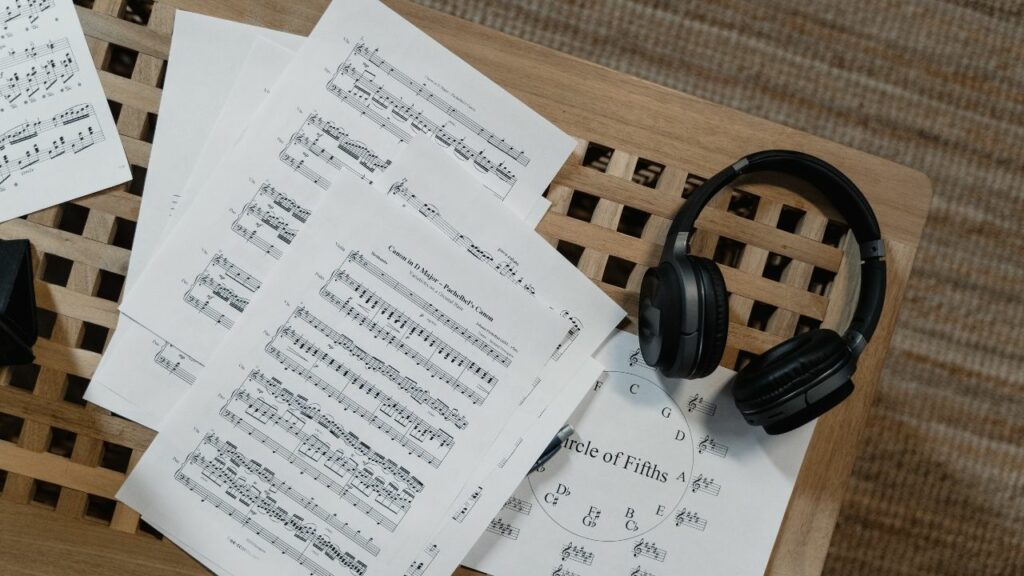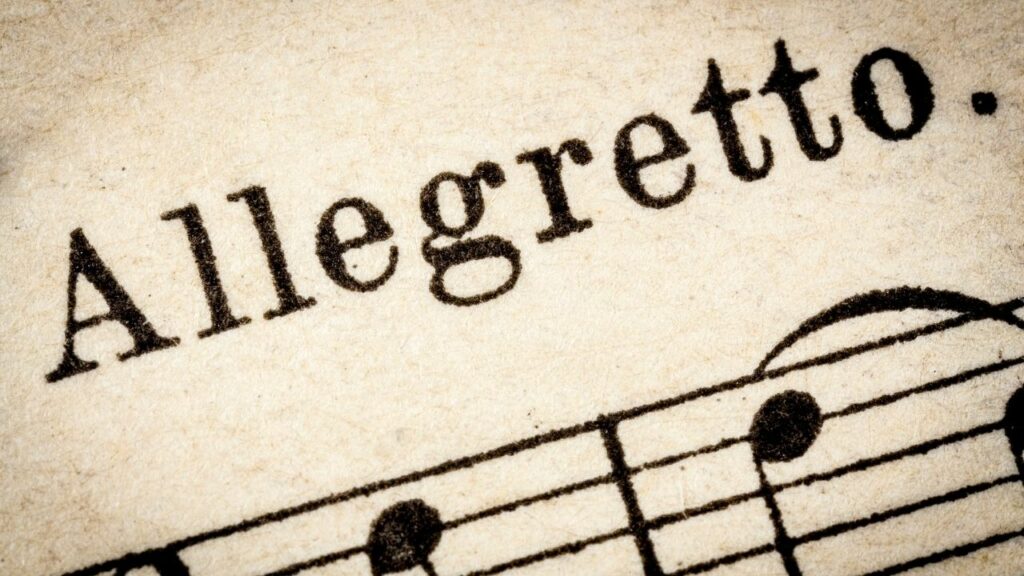Suppose you’re a musician interested in tackling a range of classical music pieces, but you aren’t classically trained. In that case, you may come across some challenges with understanding one key factor in these arrangements, music tempos.
A number of these compositions were created before the invention of the metronome and may not offer a mathematical time indication to determine the music tempo. Fortunately, there are other indicators that can help you perform the piece of sheet music as the composer intended.
Tempo Meaning in Music: What Is Tempo?

Tempo is how fast or how slow the music is played. There are three ways music tempos can be communicated to a musician. They are beats per minute (bpm), modern language, and Italian terminology. The style in which tempo is communicated depends entirely on the situation and the composer if one is involved.
The most popular and arguably the most accurate way of communicating tempo is through bpm. Music tempos and bpm are mistakenly used interchangeably, but they are different. Tempo is a convention, the subjective approach to musical timing. In contrast, bpm is a measurement, the objective approach of counting the number of beats in a minute.
Expert Tip: If the tempo is expressed in BPM, the note value like a quarter note is the beat; there are 120bpm per quarter note.
What Are Tempo Markings?
Tempo markings can be found above the stave or staff at the beginning of a piece of music. These musical notations are written typically in Italian. They also indicate the piece’s tempo rather than providing it in the form of bpm.
For example, a musician may see the tempo marking “grave” above the stave at the start of the piece. This means the tempo or speed of the music will be slow and solemn.
With the generality of tempo markings, the tempo speed of each tempo marking could be left up for interpretation. However, musicologists have adopted some general bpm ranges that the tempo markings refer to. For example, 73 to 77 bpm is the range for the tempo marking andante (walking pace).
What Are the Basic Tempo Markings?

Any classically trained musician will come across basic tempo markings in their education. It’s crucial to be acquainted with these common tempo markings so that any piece of music can be picked up and played properly.
Fun fact: Many names of music tempos have -issimo or -etto. What does it mean? If you spot a tempo marking with -etto, it means “lesser version.” On the other hand, a marking with -issimo at the end means “extremely.”
For instance, adagietto is rather slow, while prestissimo is very, very fast.
| Tempo Marking | Meaning | Beats Per Minute |
| Tempo Giusto | Consistent speed | NA |
| Grave | Slow and Solemn | 20-40 bpm |
| Lento | Slowly | 40-45 bpm |
| Largo | Broadly | 45-50 bpm |
| Adagio | Slow and Stately | 55-65 bpm |
| Larghetto | Fairly slow and broad | 60-66 bpm |
| Adagietto | Rather Slow | 65-69 bpm |
| Andante | Walking Pace | 73-77 bpm |
| Moderato | Moderately | 86-97 bpm |
| Allegretto | Moderately Fast | 98-109 bpm |
| Allegro | Fast, Quickly and Bright | 109-132 bpm |
| Vivace | Lively and Fast | 132-140 bpm |
| Presto | Very Fast | 168-177 bpm |
| Prestissimo | Very Very Fast | 178 bpm and Over |
You can also find metronome markings above the music staff. This musical notation is the speed of music, expressed in beats per minute (BPM). For example, ♩= 40
Fun fact: Most early metronomes were unreliable. When the 19th century entered, many musicians designated the piece’s tempo with Mälzel’s Metronome or MM.
Italian Tempo Markings
Throughout classical music history, Italian words have been the prevalent language for tempo markings. Why? The reason is simple, the majority of 17th composers were Italians.
Before the invention of the metronome in 1815, musical pieces did not have a mathematical time indication. It was customary for the tempo of a piece of music to be described in one or more words. Italian tempo markings not only indicate the tempo but the mood of the piece. For example, Allegro agitato indicates tempo (faster than a usual Allegro) and a mood (agitated).
The exhaustive list of Italian tempo markings can carry over twenty-seven indicators, depending on your resource, all of which fall into one of three tempo categories: slow, moderate, or fast. As seen in the table above, each category has a range within it; and there are more variations that you can see below.
| Tempo Marking | Meaning |
| Larghissimo | Extremely Slow |
| Adagissimo | Very Slow Tempo |
| Andantino | Slightly Faster than Andante |
| Marcia Moderato | Moderately, March Manner |
| Animato | Lively |
| Agitato | Hurried |
| Allegrissimo | Very fast |
| Allegro moderato | Moderately fast |
| Vivacissimo | Very fast and lively |
| Andante moderato | Moderate walking pace |
French Tempo Markings
Naturally, as more composers of different countries gained notoriety, tempo markings in other languages, like French, began springing up and becoming more common. Such notable names as baroque composer Jean-Philippe Rameau and impressionist composer Claude Debussy. French tempo markings vary only slightly from Italian tempo markings, namely the use of two modifiers, Trés and Moins.
| Tempo Marking | Meaning |
| Grave | Slow and Solemnly |
| Lent | Slowly |
| Modéré | At Moderate Tempo |
| Vif | Lively |
| Vite | Fast Tempo |
| Trés | Very, as in Trés Vif, Very Lively |
| Moins | Less, as in Moins Vite, Less Fast |
German Tempo Markings
Ludwig van Beethoven was one of the first German composers to use tempo markings in his native language. However, Gustav Mahler took the use of German tempo markings to another level, creating the most elaborate combinations of tempo and mood indicators, as well as the use of multilingual tempo markings combining German and Italian in one piece.
| Tempo Marking | Meaning |
| Kräftig | Vigorous or powerful |
| Langsam | Slowly |
| Lebhaft | Lively (mood) |
| Mäßig | Moderately |
| Rasch | Quickly |
| Schnell | Fast |
| Bewegt | Animated, with motion |
What Are Tempo Changes?
Music tempos don’t have to be fixed throughout a single composition; it can change. If the tempo does change in the course of a piece, it will be indicated above the measure. Certain genres of music, like pop music, tend to have a fixed pace throughout the song, but many other genres do not abide by this rule. To name an example, Symphonies typically consist of multiple movements, and each movement can begin with a different tempo from the original tempo.
Here are some tempo changes and the correct abbreviation.
- Accelerando (accel.): accelerating or speeding up
- Allargando: decreasing tempo or growing broader, usually near the end of a piece
- Ritardando (rit.): slowing down gradually
- Ritenuto: an immediate reduction of speed, to suddenly and temporarily decrease the tempo.
- Rallentando (rall.): a gradual slowing down
- Stringendo: with quickening of tempo (as to a climax)
- Meno mosso: less movement
- Più Mosso: opposite of meno mosso, meaning more movement
Fun fact: You will find there are gradual changes either above or below the staff. Some composers use expressive marks like Rubato for tempo changes.
Final Thoughts
Whether music tempos indicated mathematically through bpm or with terminology through tempo markings, you are now equipped to tackle both and perform the piece to perfection. If an entire composition utilizes a fixed pace or one or more tempo changes, you now know where to find them on the sheet music and what they mean. All that is left is to pull out your metronome and practice to your heart’s desire.
Table of Contents






